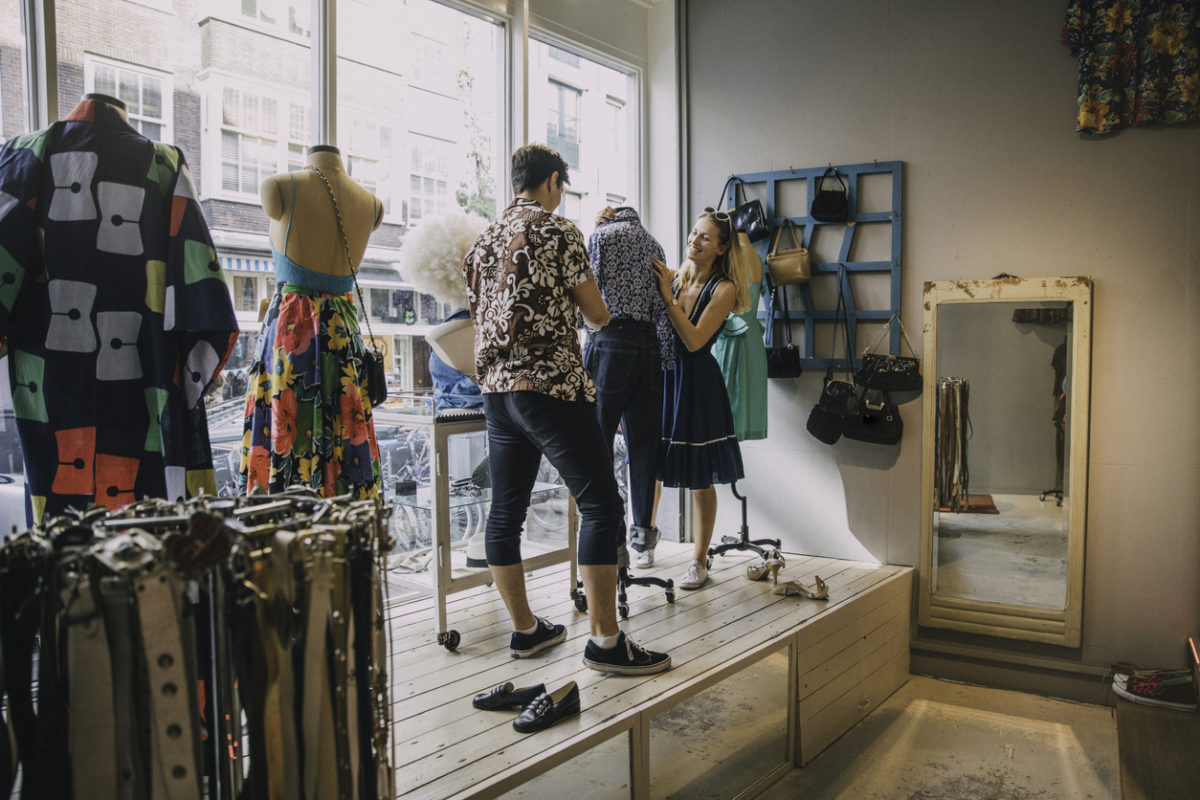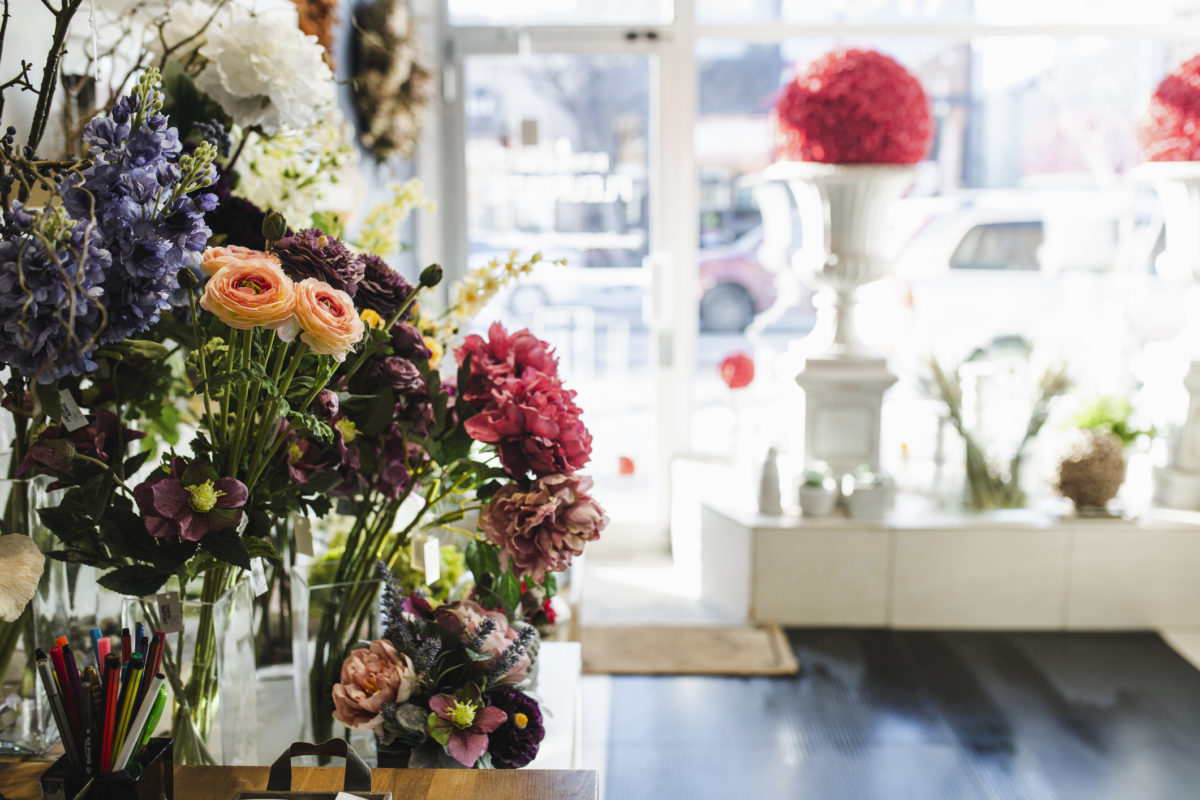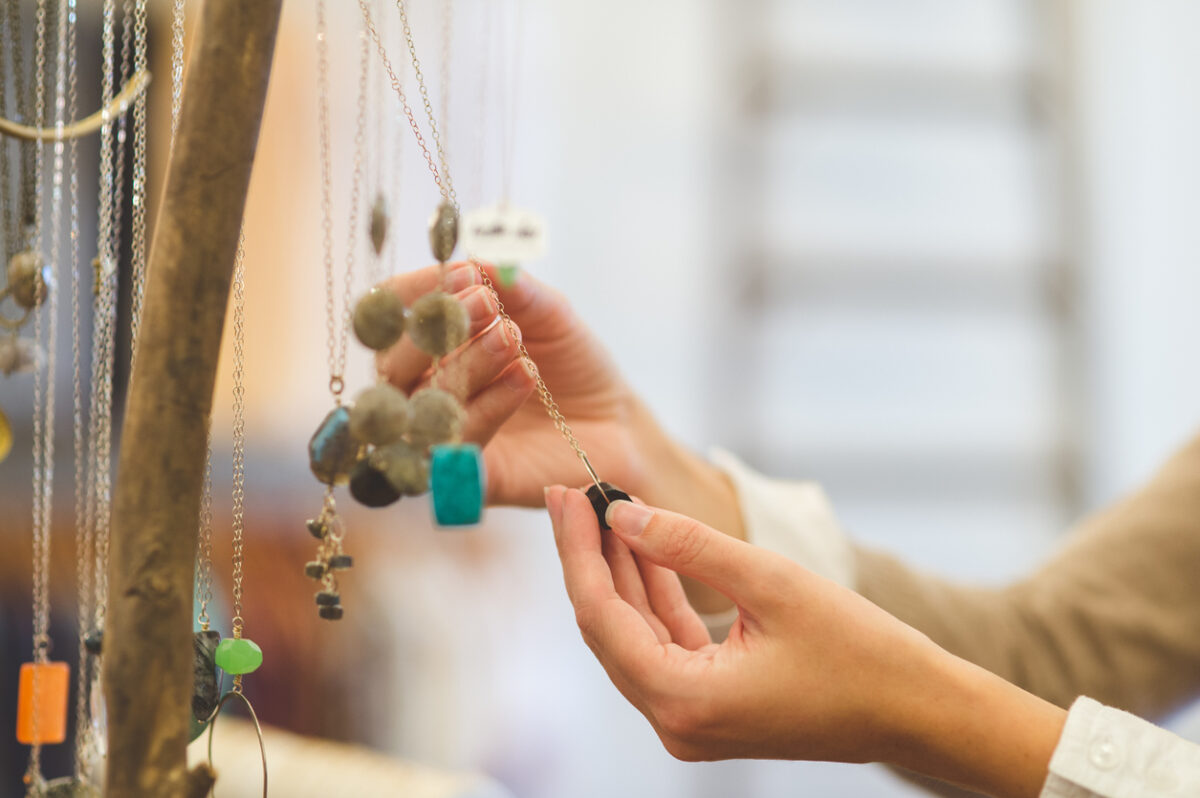Types of Jewelry
Jewelry statistics show that married females between the ages of 25 and 34 spend the most money on jewelry. Annually, the average American spends less than $100 on jewelry, and the average household spends a little over $400.
Statistics also show which type of jewelry sells the best each year. Among women respondents, 87% reported earrings, 64% necklaces, 53% rings, and 47% bracelets. Among both men and women, necklaces were the top seller.
Now that you know the top four categories, it’s time to narrow them down to specific styles. Below are seven popular types of jewelry to provide a variety for customers.
1. Pendant Necklaces
Whether it’s a diamond solitaire, charm, or oversized natural stone, the pendant necklace is hot right now. The kind of pendant necklace you offer in your boutique will depend on your type of customer. If you have high-end buyers, your pendant necklaces should consist of fine metals and quality gemstones.
If you cater to the average American, you want to offer pendants that resemble high-end jewelry without cost. Offer a necklace with layered chains and a pendant on the lowest. Or, pick one chain with multiple pendants made of different materials, such as resin, metal, rhinestones, and more.
2. Bracelets
For high-end customers, think diamonds, gold, and platinum. Think tennis bracelets. For those looking for trendy but inexpensive bracelets, think bangles and cuffs. Popular now are beaded stretch bracelets made with beautiful glass beads. They come in numerous colors and shapes. Some have charms or bars with messages.
Personalization is popular now. People like showing their personality with the jewelry they wear. Someone deeply religious may want a bracelet with crosses or their favorite Bible verse. Someone who loves music may want their bracelet to reflect their favorite band. Because bracelets are stackable, your customer has more options to make them their own.
3. Earrings
Earrings not only need to represent your customers, but they also need to represent your brand, as other jewelry pieces should. If you are selling formal wear, you don’t want to offer your customers football-themed earrings.
Whether you are selling diamond, metal, plastic, or any other type of earring, offering multiple versions is a good idea. You can likely create a bundle or assortment for bigger profit margins. For example, combine studs, hoops, and dangles in one package to give the customers a better deal.
4. Rings
Statement rings are everywhere. They are cocktail rings that are much larger than your ordinary fashion ring. They are chosen to express personality, attitude, and sometimes, beliefs and values. They can also bring awareness or support your favorite team or group.
One consistent trait of statement rings is that they are all attention grabbers. Some people wear class rings to show they graduated from an elite school. Some wear large turquoise stones representing their love of the west. Whether a wedding ring or a plastic one from the gumball machine, most women wear statement rings because they connect them to something special.
Another popular type of ring today is thin bands worn alone or stacked with other bands.
5. Seasonal Jewelry
Some types of jewelry deserve their own category, like seasonal jewelry. Even though your customer will only wear them for a portion of the year, they will wear them often and with pride. Earrings, rings, bracelets, and necklaces have a seasonal theme. For summer, think of flower-shaped silver earrings and pendants or actual flowers in resin rings and bracelets. Also, think of football, pumpkins, autumn colors, and even items you find in nature. A silver acorn or gold-plated pinecone are great additions to a person’s fall collection.
6. Personalized Jewelry
Many women are looking for more customization in their jewelry. They want meaning and significance. They would rather create wedding bands from sea glass found on the beach while getting engaged than go down to the local mall jewelry store and buy something everyone else can own.
Personalized jewelry may be your name written in gold to form a pendant. It may also be your nickname on a bangle bracelet or monogrammed earrings.
As a boutique owner, having personalization options can bring in more revenue when customers buy pieces for themselves and personalized gifts for friends and family.
7. Themed Jewelry
Believe it or not, themed jewelry can be high-end. Picture a diamond-shaped football pendant, Christmas tree, or ribbon representing your favorite charity. Customers of all kinds enjoy wearing jewelry that matches what they are doing. For example, someone attending the ballet may wear earrings in the shape of ballet shoes.
Someone who loves horses may enjoy a horseshoe-shaped statement ring. Someone attending a wedding, as a guest or a bridal party member, may need formal jewelry.
Consider your customers and their lifestyles. What themed jewelry would they love? Are there local events your customers attend? Annual festivals? If so, offer jewelry to match the theme, and they will be standouts.
Buy Jewelry From Wholesale Suppliers
To make buying and selling different types of jewelry easier, purchase the jewelry from a wholesale supplier. Here are some reasons why:
- Wholesale suppliers know what types of jewelry are trending since they buy directly from designers and manufacturers.
- Wholesale companies offer a large variety of jewelry, including all the types listed above.
- Purchasing wholesale means you get the products at a discount based on how many you buy. The more you buy, the bigger your discount and your profits.
- You can often use the wholesale supplier’s photos that display the jewelry. You don’t have time or money for photo shoots. Wholesalers make it easy.
- Wholesale suppliers work within your timeline to ensure the jewelry arrives on time and in quality conditions.
Wholesalers want you to succeed so they can succeed. They value you as a customer and want to build a long-term relationship. They are willing to create a unique contract based on your boutique’s needs, making it a win-win-win for you, your supplier, and your customer.








No Comments